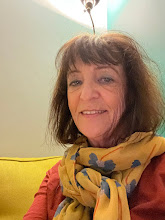A visit in Lafayette, the Cajun capital, can start at the Paul and Lulu Hilliard University Art Museum or the Acadiana Center for the Arts, downtown.
Two Louisiana artists who gained notoriety in the Big Apple and beyond, are home and will be sharing the "University of Louisiana at Lafayette's College of the Arts' 2013 Spark Lifetime Achievement Award" in March.
 Known internationally for his neon pieces started in the 60's, Keith Sonnier, born in Mamou, Louisiana, made his way to New York City and became a figure of its blossoming cultural life. Labelled as Process and Environmental art, his works have been exhibited at the Leo Castelli, Mary Boone and Pace, three famous galleries. Two iconic pieces are on display at the University Art Museum, a work from the Media Series (1992) and Dauralde Abri (2000), a ladder underlined by two green neon tubes leading to a plastic shelter fit for a small non claustrophobic human, curled in a fetal position. Perched on an elevated support, the small cabin made me think of Absalon's cells, a Louisiana version for a swampy ecosystem. In his Media Series piece, antennas, satellite dishes, numbers, words, drawn and painted, fill the nylon stretched on the metal frame of a camping bed. Circles, ellipses, lines, intersect, overlap, interconnect and obscure the void space, a view of the sky or the universe. A unique artist in sync with our time.
Known internationally for his neon pieces started in the 60's, Keith Sonnier, born in Mamou, Louisiana, made his way to New York City and became a figure of its blossoming cultural life. Labelled as Process and Environmental art, his works have been exhibited at the Leo Castelli, Mary Boone and Pace, three famous galleries. Two iconic pieces are on display at the University Art Museum, a work from the Media Series (1992) and Dauralde Abri (2000), a ladder underlined by two green neon tubes leading to a plastic shelter fit for a small non claustrophobic human, curled in a fetal position. Perched on an elevated support, the small cabin made me think of Absalon's cells, a Louisiana version for a swampy ecosystem. In his Media Series piece, antennas, satellite dishes, numbers, words, drawn and painted, fill the nylon stretched on the metal frame of a camping bed. Circles, ellipses, lines, intersect, overlap, interconnect and obscure the void space, a view of the sky or the universe. A unique artist in sync with our time.Half of the museum's first floor is dedicated to Richard Landry for Dickie Landry's New York: 1969-1979. Born in Cecilia, Louisiana, and currently living in Lafayette, the musician worked in NYC and collaborated with other artists including painters, choreographers, writers, actors. For this exhibition, Landry did print personal photographs of well-known artists he interacted with casually in the course of diverse projects, and provides unique black and white shots of William Burroughs, Richard Serra, Bruce Nauman, Gordon Matta-Clark in his Soho restaurant, Robert Rauschenberg in his Captiva Island studio in Florida or a first hand view of the Philip Glass Ensemble performing in Einstein on the Beach or Dressed Like an Egg. An hypnotic video 1.2.3.4 (1969) experiments with the source of sounds, showing hands, lips and instruments. Two paintings representing Landry's geometric abstract style and a videotaped interview of the artist complete the show, an enlightening exhibition about a multi-talented artist bringing a breath of NYC to the deep South.
The Acadiana Center's guest, Luis Cruz Azaceta, migrated from Cuba at age 18, lived in New York City, fell in love with Louisiana and made it home. The title of his exposition Louisiana Mon Amour tells it all. It is also the title of a new installation. The exhibition starts with known works from his Shifting States Series, 2011. Red, black compact shapes surrounded by white fumes for Iraq and the oldest color, violet, for Egypt, both are oppressive paintings of anonymous, empty, phantom worlds. His newest works keep up with disasters closer to home with Sandy Hook Shooting, 2012 and Boston Bombing 3, 2013. A narrative representation of the events with a caricatural expressionistic rendition of the unfortunate actors for the former and in the latter, an explosion of human pieces enclosed in a magma-like substance with the two shooters isolated in a corner, present a summary of the tragedies.
It seems that Azaceta's world is getting darker and we are reminded of this while looking at a few of his earlier pieces like Transit, 2005, Museum Plan for Edison, 2006 or at the entrance City Painter of Walls, 2009, clashing with their bright colors. Two installations complete the exhibition. Evacuation Highway, 2005, created in the aftermath of the Katrina disaster, shows highways jammed with cars, going nowhere. The highlight is of course Louisiana Mon Amour, a gathering of recuperated, patched objects, glamorized with punchy, Caribbean colors, a reflection on Louisiana's recovery and a tribute to its
resilient and resourceful inhabitants. Over the years, Azaceta, a member of the Cuban diaspora, has become a Southern artist, preoccupied by the land and its people.
photographs by the author:
"Longhorn Study", 2006, Keith Sonnier (at Octavia Gallery in New Orleans, no photographs allowed at Hilliard Museum)
view of the exhibition "Louisiana Mon Amour", Luis Cruz Azaceta at the Acadiana Center for the Arts












